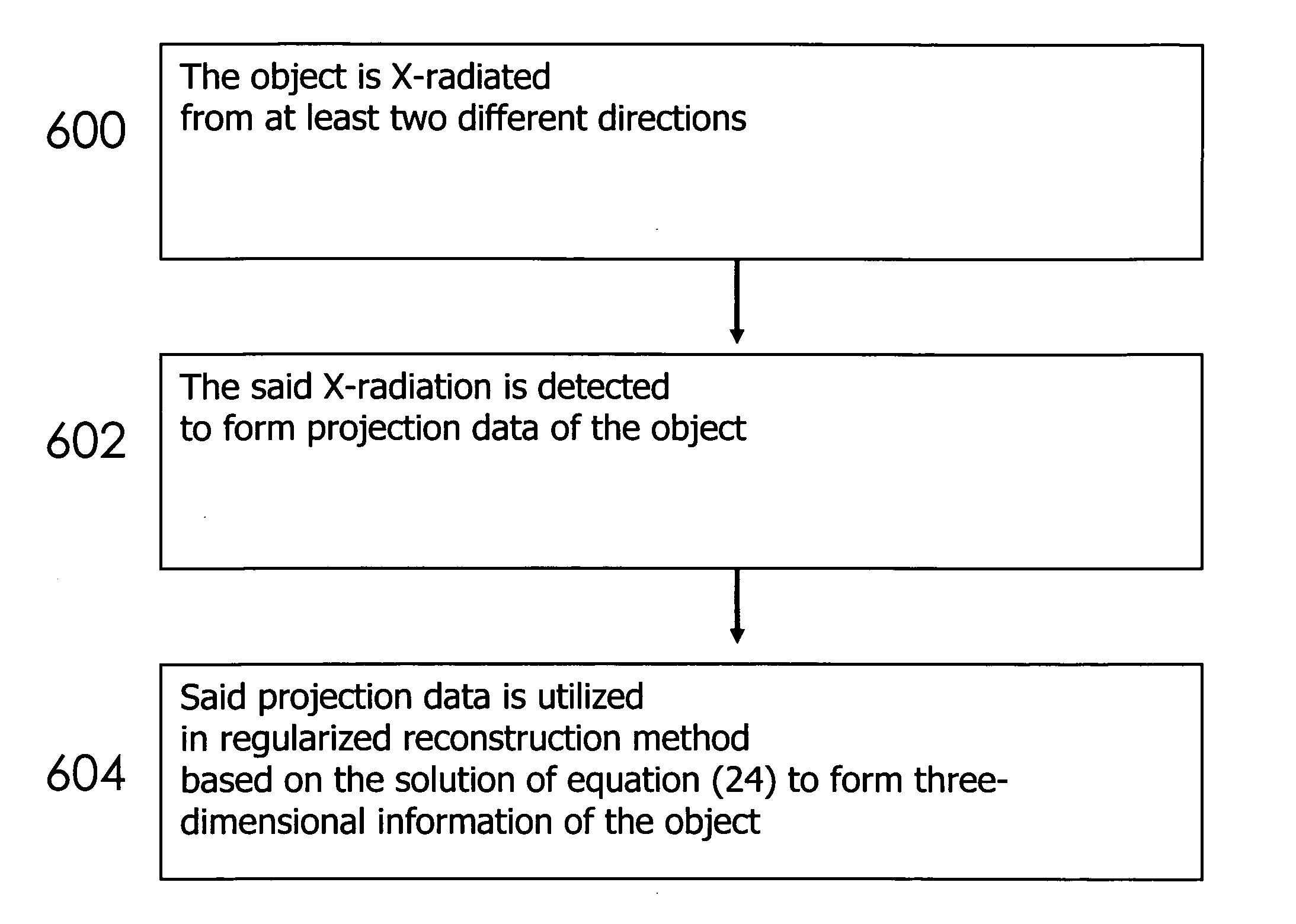Method and arrangement for three-dimensional medical X-ray imaging
- Summary
- Abstract
- Description
- Claims
- Application Information
AI Technical Summary
Benefits of technology
Problems solved by technology
Method used
Image
Examples
Embodiment Construction
[0022] In practical imaging situations X-ray images are not always available from all around the body. The body might be visible only from certain directions due to imaging geometry. For example this is the case in intraoral dental imaging with the detector inside the patient's mouth. This situation is called limited-angle tomography. Also, even when imaging from all around the body, the number of radiographs should be minimized in medical applications for reducing the X-ray dose of the patient and shortening the time needed for imaging. Such situations lead to sparse projection data.
[0023] In the preferred embodiments of the invention a regularized inversion algorithm is used to create a new type of 3D medical X-ray imaging using sparse projection data as input. This new imaging is intermediate between a projection radiograph and a full CT scan.
[0024] A regularized reconstruction method, as opposed to a general reconstruction method, produces reconstructions from given measuremen...
PUM
 Login to View More
Login to View More Abstract
Description
Claims
Application Information
 Login to View More
Login to View More - R&D
- Intellectual Property
- Life Sciences
- Materials
- Tech Scout
- Unparalleled Data Quality
- Higher Quality Content
- 60% Fewer Hallucinations
Browse by: Latest US Patents, China's latest patents, Technical Efficacy Thesaurus, Application Domain, Technology Topic, Popular Technical Reports.
© 2025 PatSnap. All rights reserved.Legal|Privacy policy|Modern Slavery Act Transparency Statement|Sitemap|About US| Contact US: help@patsnap.com



